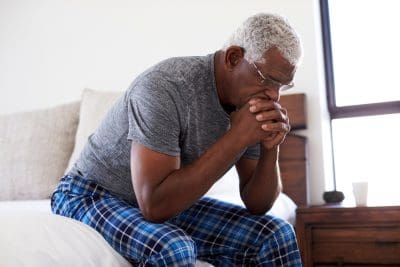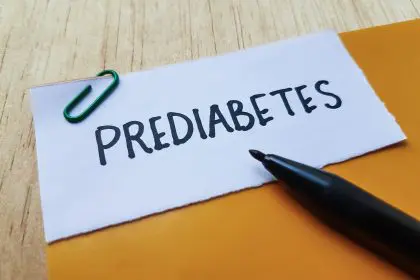Remember that awful breakup from years ago? For some people, just thinking about it doesn’t just bring back bad feelings — it actually hurts. Like, physically hurts. That’s not being dramatic or making things up. Your body might be reacting to emotional memories with very real pain signals, and it’s more common than you’d think.
When your body keeps the score of old wounds
Our brains don’t always make clear distinctions between physical and emotional pain. That’s why a harsh rejection can feel like a slap in the face or why grief can create a literal ache in your chest. For some people, these aren’t just figures of speech — they’re actual sensations.
Your brain processes emotional pain in many of the same regions it uses to process physical pain. When you remember a deeply hurtful experience, your brain might reactivate those same neural pathways, essentially telling your body, “Hey, remember this pain? Let’s feel it again!”
And here’s where it gets really interesting — people who experienced emotional trauma or chronic stress during key developmental periods might develop nervous systems that are especially good at remembering pain. Their bodies become highly efficient at storing and recalling both the emotional and physical sensations of difficult experiences.
Why some people feel it more than others
You probably know someone who seems to bounce back from emotional blows without much trouble, while someone else seems deeply affected by similar experiences. This difference isn’t just about being “sensitive” or “tough” — it often comes down to biology and personal history.
Some people are born with nervous systems that are naturally more reactive to stimuli. Their bodies produce stronger stress responses and their brains may form stronger associative memories between events and physical sensations.
Early life experiences also play a huge role. If your developing brain learned that the world was unpredictable or threatening, it might have permanently adjusted its sensitivity to protect you. That heightened alertness was adaptive then, but now it might mean your body overreacts to emotional triggers.
Your personal pain history matters too. If you’ve experienced chronic pain along with emotional distress, your brain might have formed stronger connections between the two. Later, emotional memories can more easily trigger those same pain pathways.
The unexpected places emotional pain shows up in your body
When asked about physical symptoms from emotional memories, most people point to their chest or stomach. But the reality is much more diverse and sometimes downright bizarre.
Migraines that appear like clockwork on the anniversary of a loss. Back pain that flares up when you’re in situations similar to past trauma. Jaw tension that emerges when you think about certain people from your past. Unexplained skin sensitivity or rashes that correlate with emotional stress.
What makes these symptoms so challenging is that they often show up without obvious triggers. You might not even make the connection between your suddenly aching shoulder and the fact that you just saw a social media post from an old friend who reminds you of a difficult time.
And because these symptoms have real physical components, traditional medical tests might show actual inflammation or muscle tension — but doctors might miss the emotional trigger if they don’t know to look for it.
The memory-pain connection that baffles doctors
Many people suffering from pain triggered by emotional memories bounce from doctor to doctor seeking answers. Standard tests might show minor physical issues but nothing that explains the severity of symptoms.
This disconnect often leads to frustration on both sides. Patients feel invalidated when told their significant pain doesn’t have a proportionate physical cause. Doctors feel stumped when treatments addressing physical symptoms don’t resolve the problem.
The issue isn’t that the pain isn’t real — it absolutely is. Brain scans confirm that emotionally triggered pain activates the same brain regions as physically caused pain. The problem is that treating only the physical manifestation without addressing the emotional trigger is like trying to fix a projector by painting over the image on the screen.
Breaking the cycle between memory and pain
Understanding the connection between emotional memories and physical pain is the first step toward addressing it. Here’s where the real work begins.
Your nervous system can learn new responses to old triggers. Through approaches like somatic experiencing, trauma-informed therapy, and mindfulness practices, many people have retrained their bodies to respond differently to emotional memories.
The key is recognizing that both the emotional and physical components need attention. Working with healthcare providers who understand the mind-body connection can make a tremendous difference. This might mean assembling a team that includes both physical therapists and mental health professionals.
Simple techniques can help interrupt the cycle when you notice it happening. Grounding exercises that focus your attention on present physical sensations can help pull your nervous system out of the remembered pain state. Physical movement that engages different muscle groups can help release tension patterns associated with old memories.
When your pain deserves a second look
If you’ve been struggling with persistent physical symptoms that don’t fully respond to treatment, consider whether emotional memories might be playing a role. Ask yourself these questions:
- Do your symptoms flare up during certain emotional states or when certain memories surface?
- Have you noticed patterns between anniversary dates or reminders of past events and your physical symptoms?
- Does your pain move around or change in ways that aren’t typical for purely physical conditions?
- Has your pain persisted despite treatments that should have resolved any physical causes?
- These questions aren’t meant to suggest your pain is “all in your head” — quite the opposite. They acknowledge that your pain is real but might have roots in how your brain and body process emotional experiences.
The upside of understanding your emotional pain patterns
Discovering that your physical pain connects to emotional memories can actually be empowering. While it might seem frightening to realize your body responds this way, it also opens up new avenues for healing that you might not have considered before.
Many people find that addressing the emotional components of their pain provides relief that purely physical treatments couldn’t deliver. And the skills developed through this process — greater body awareness, emotional regulation techniques, stress management strategies — benefit overall health beyond just pain reduction.
Your body isn’t betraying you by responding to emotional memories with physical pain. It’s using the only language it knows to tell you something important about your experiences. Learning to listen to and work with these signals, rather than fighting against them, might be the key to finding relief that lasts.
















